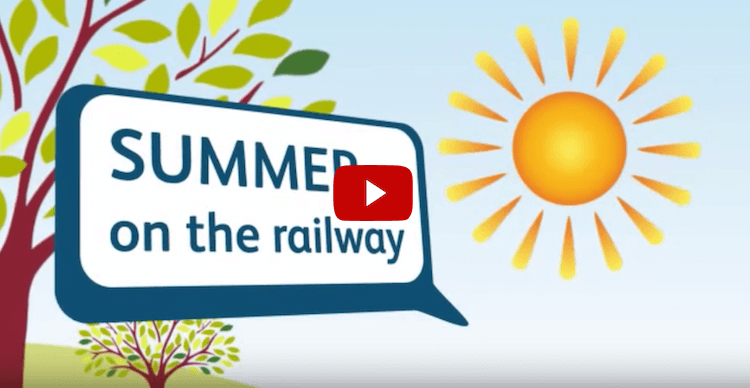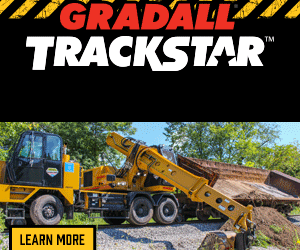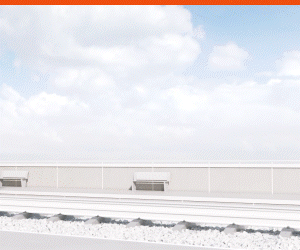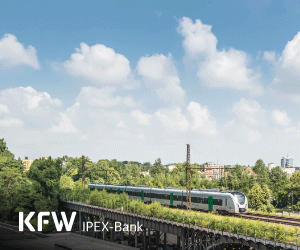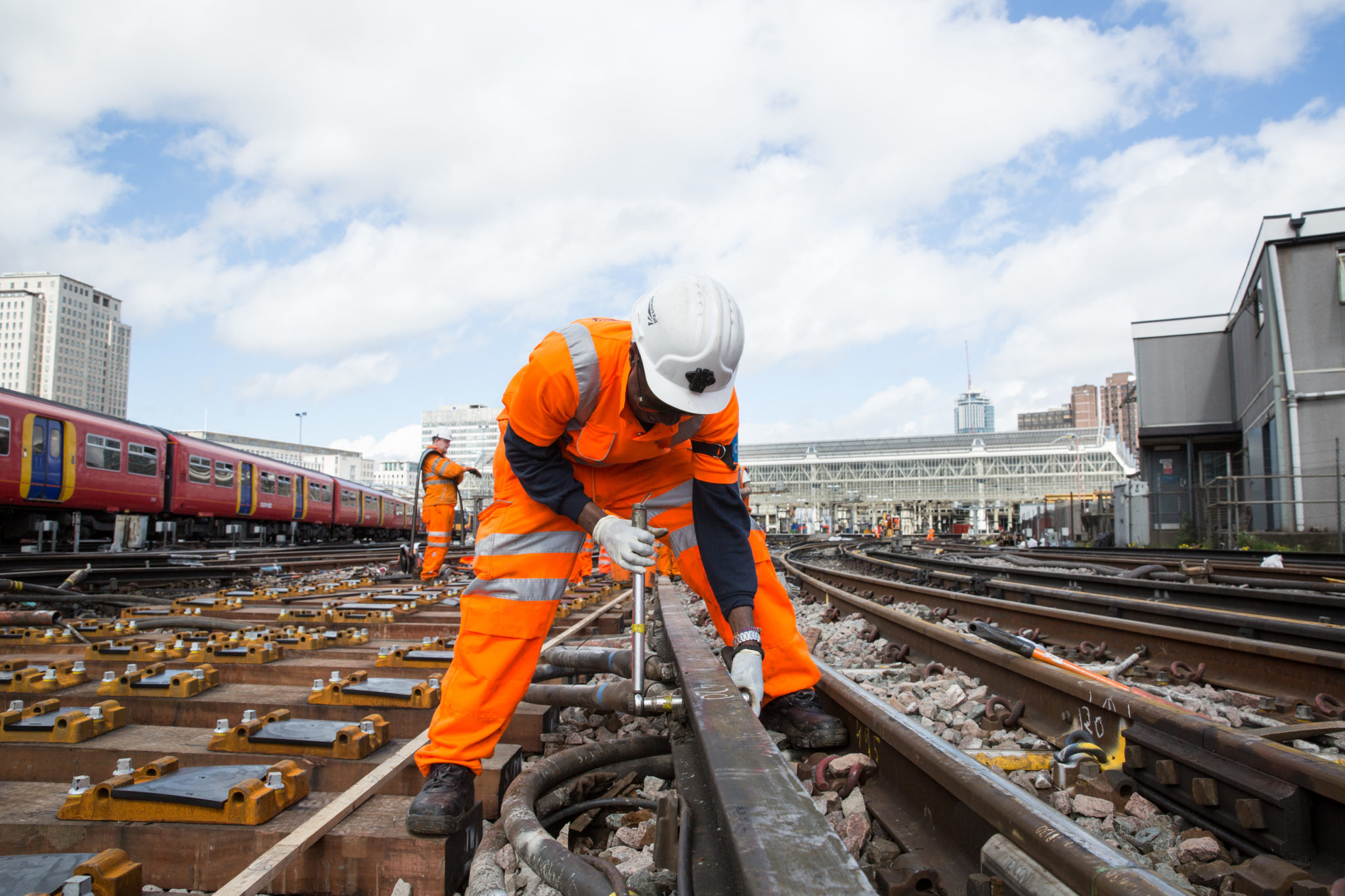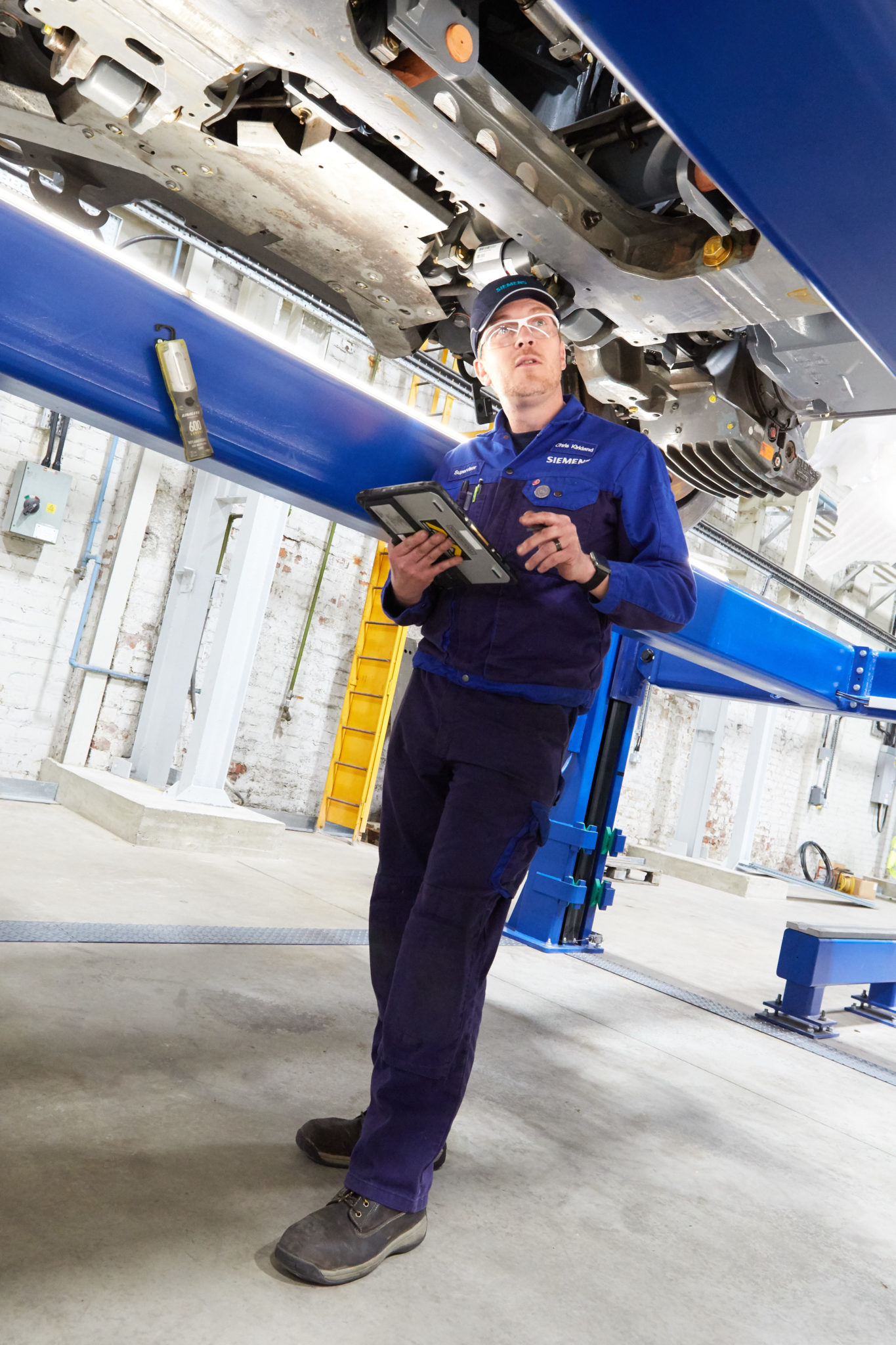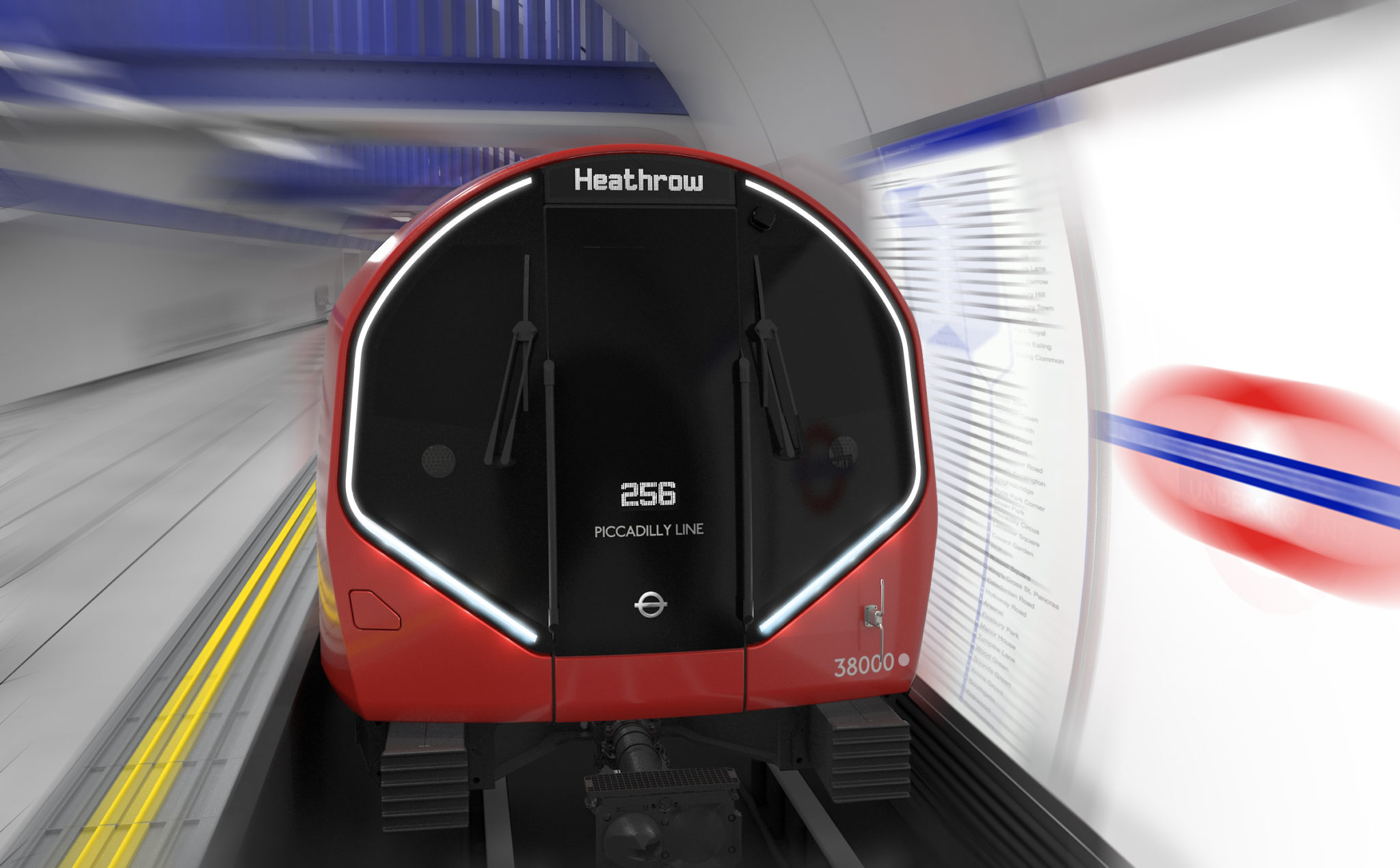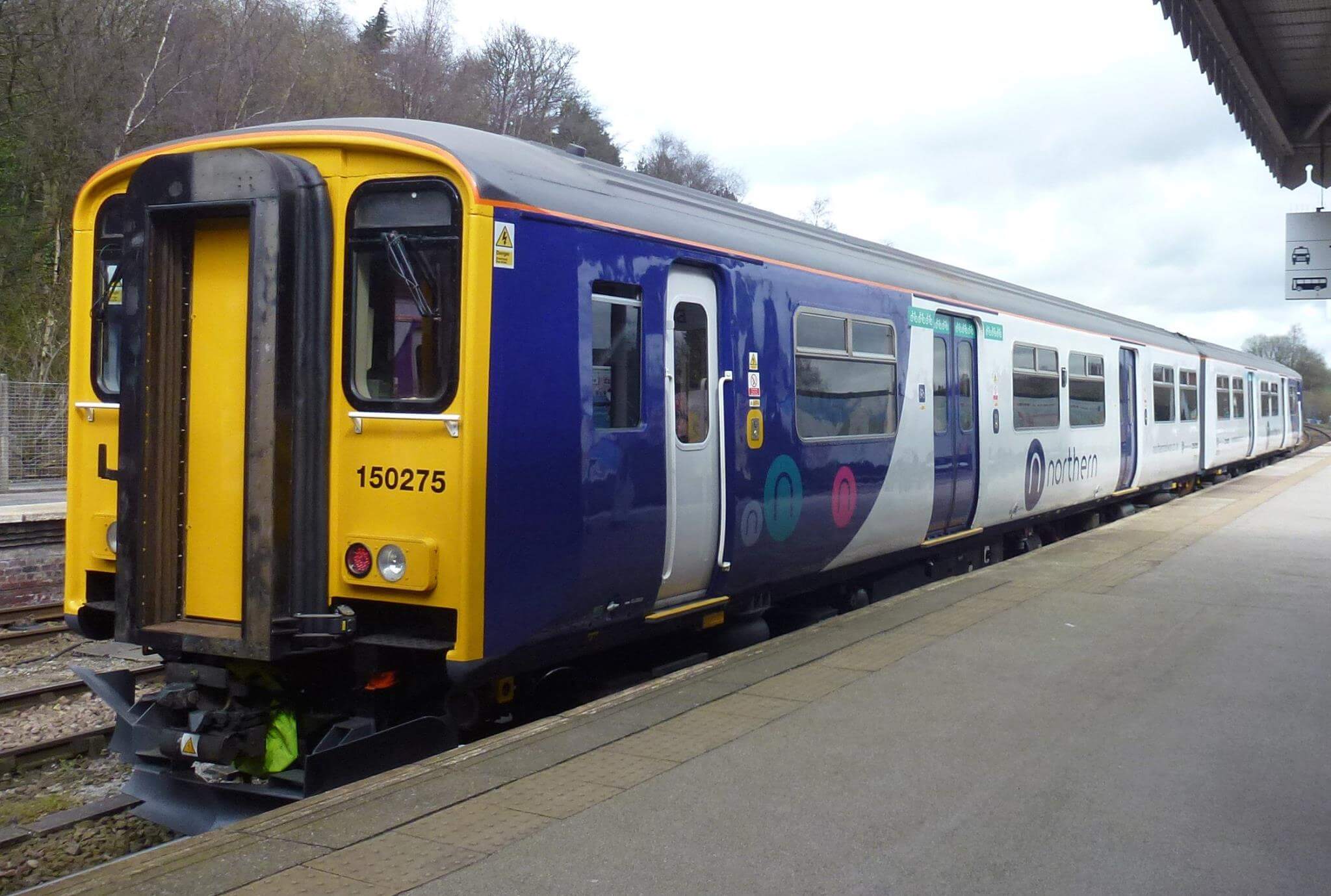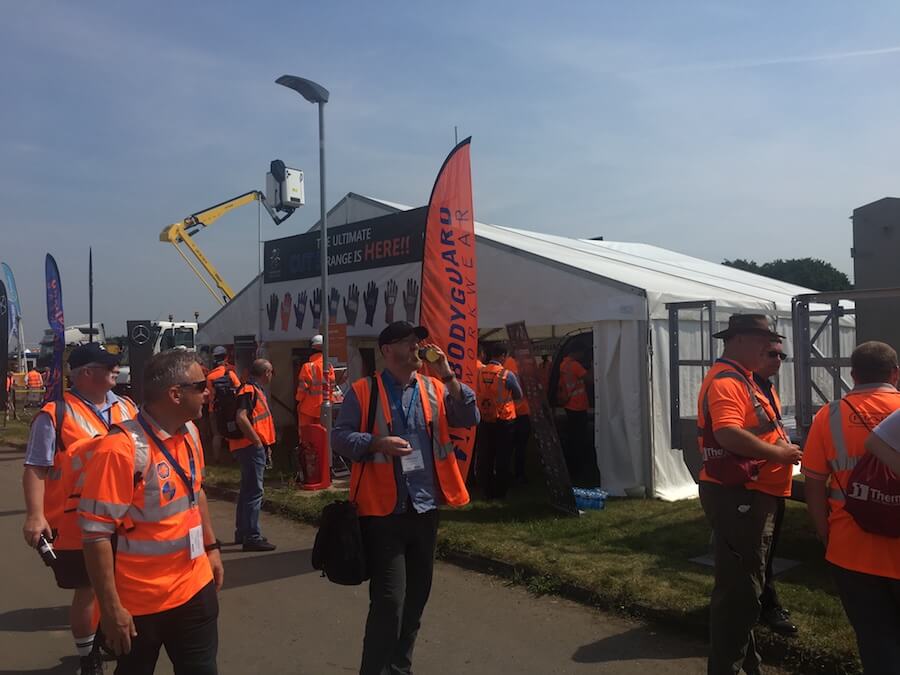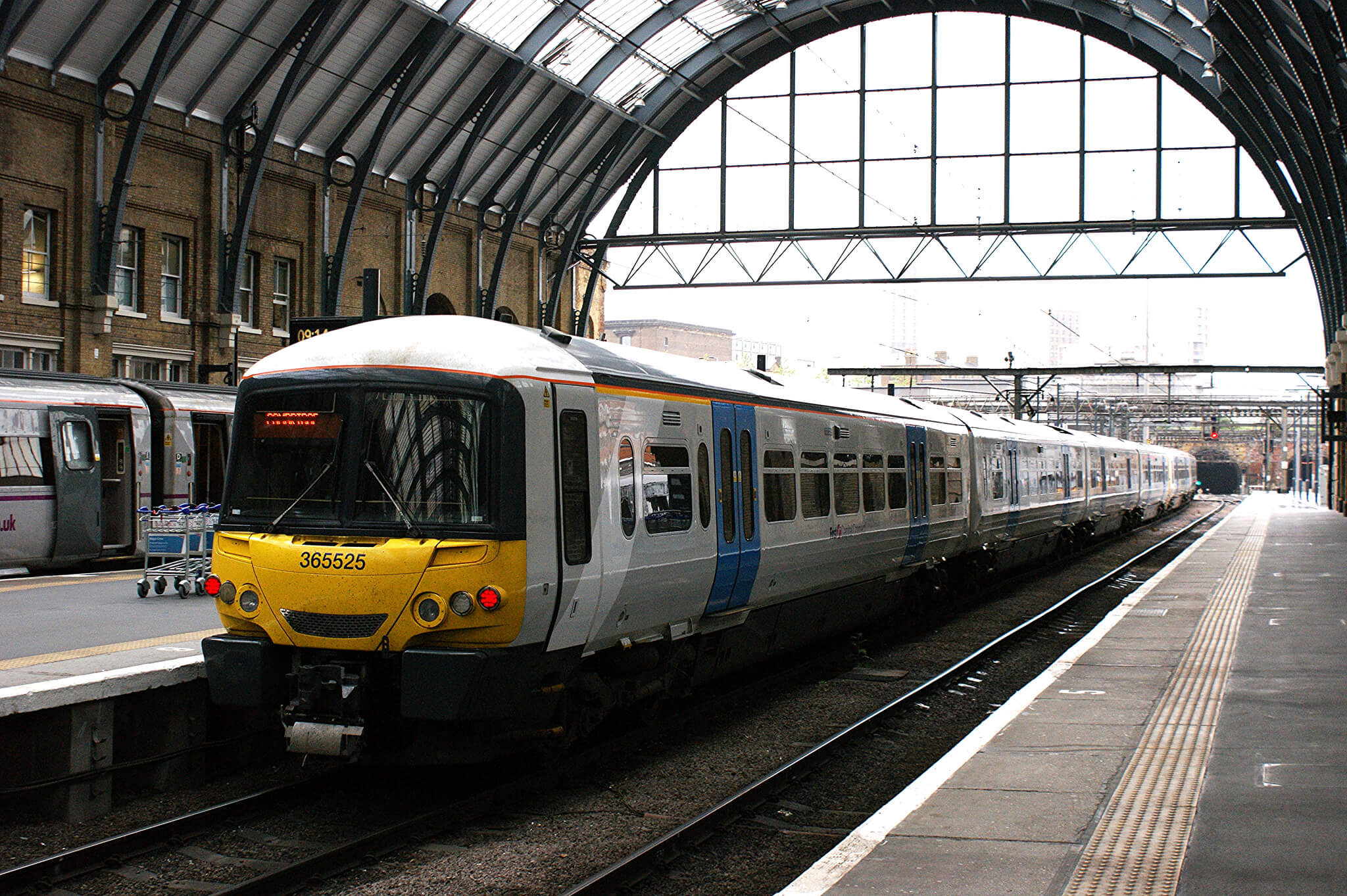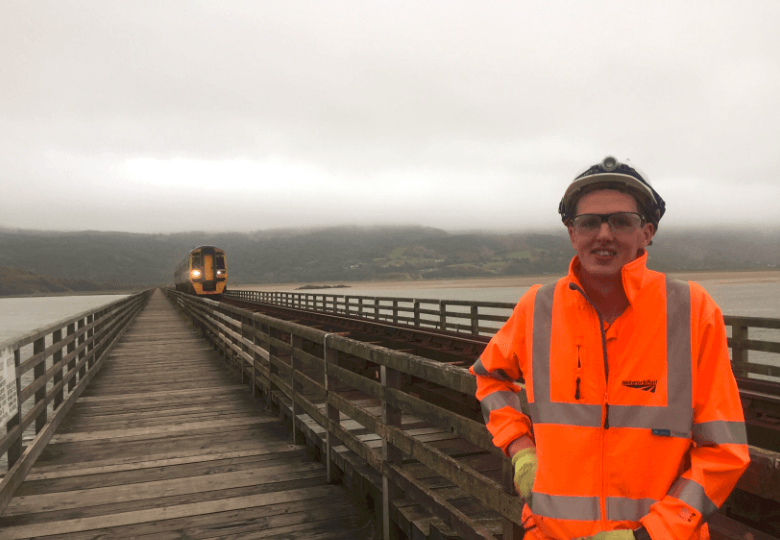When Britain enjoys a summer heatwave, rails in direct sunshine can be as much as 20°C hotter than air temperature. Because rails are made from steel, they expand as they get hotter, and can start to curve – known as buckling.
Most of the network can operate when track temperatures heat up to 46°C – roughly equivalent to air temperature of around 30°C – but rails have been recorded at temperatures as high as 51°C.
Keeping Trains Running in High Temperatures
When our remote monitoring systems tell us that a section of track might be expanding too much and could cause problems, we introduce local speed restrictions. Slower trains exert lower forces on the track – this reduces the chance of buckling.
Rails sometimes buckle even with prevention in place, and this means we need to close the line and repair the track before trains can run again. This can disrupt journeys because we often have to wait until the rail temperature has dropped before we can carry out these essential repairs.
How We Prevent Tracks from Getting Too Hot
We work closely with specialist weather forecasters and local weather stations to make necessary plans and take action so rails are less likely to buckle.
- Our teams check track stability each winter as part of ongoing maintenance, and strengthen any weak parts before summer.
- We paint certain parts of the rail white so they absorb less heat – and expand less. Typically, a rail painted white is 5°C to 10°C cooler than one left unpainted.
- As most track is made up of long pieces of rail that are stretched and welded together, there is much less chance of buckling in very high temperatures because there is reduced compression.
- When a track is made up from short rails bolted together, we leave small gaps between each one so that expansion doesn’t cause a problem.
- We’re always improving how we measure and calculate rail temperatures. One way we’re doing this is by installing probes that alert us when track temperatures rise to give us chance to take action and stop a problem before it happens.
- In some parts of Britain’s rail network, tracks are laid on reinforced concrete slabs rather than on sleepers and ballast (the bed of stones that supports the sleepers). This helps to prevent rails from buckling.
Find out more, including why rails buckle in Britain here.
FOR ALL THE LATEST INFORMATION, NEWS, IMAGES, VIDEOS AND ARTICLES ON ALL ASPECTS OF INFRASTRUCTURE, PLEASE CLICK HERE.

